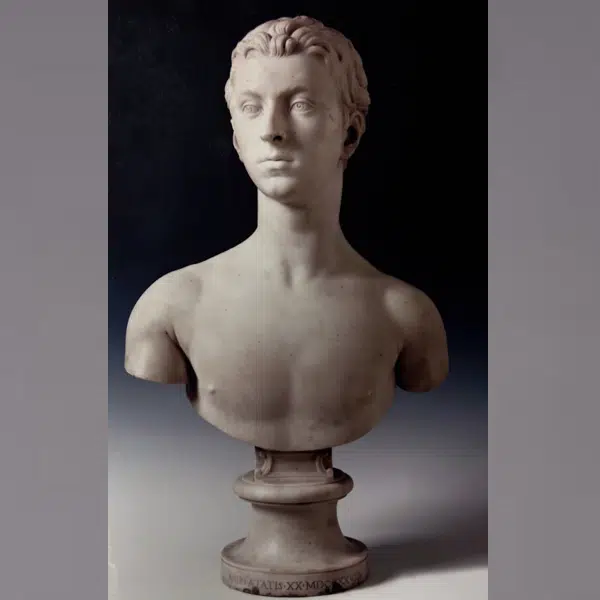Pope Francis has announced that the Vatican will return three 2,500-year-old Parthenon artifacts back to Greece. This serves as the latest case of Western museums heeding to the call for restitution of artifacts to their countries of origins. It also serves as a historic step toward the reunification of the surviving Parthenon sculptures. And, despite prior resistance from the British Museum to give up their prized collection, they could be following suit.
The fifth-century artifacts are thought to once be a part of the 520-foot frieze that surrounded the Parthenon on the Acropolis. The three pieces depict the head of a boy, the head of a horse, and the head of a bearded man, all of which were a part of a processional in the frieze to honor the goddess Athena. Much of the expansive architectural embellishment was lost due to bombardment and explosions in the 17th century, and what was left was mostly taken by Lord Elgin in the 19th century for the British government. Because of this, the famed marbles also have the colloquial misnomer of “The Elgin Marbles.”
The three Vatican artifacts have been in the Vatican’s possession for about two centuries, and will now be returned to its native home at the Acropolis Museum. The Vatican classifies this transaction as a “donation,” from Pope Francis to His Beatitude Ieronymos II, the Orthodox Christian archbishop of Athens and all Greece. They describe the gesture as “a concrete sign of [the Pope’s] sincere desire to follow in the ecumenical path of truth.”
This return is expected to take quite a long time, as repatriations usually do. Strict documentation, research, and authentication procedures need to be completed along with transportation preparation and lengthy discussions, leading to a process that could be years long.
No matter the length of time it will take, the Greek Ministry of Sports and Culture expresses their gratitude to Pope Francis in a statement. As well as thanking the Pope, they specifically add pressure onto the British Museum to return their Parthenon sculptures. They state, per Google Translate, “This decision comes in support of the diligent effort made by the Greek Government and Kyriakos Mitsotakis personally, since July 2019, for the return of the Parthenon Sculptures from the British Museum and their reunification with those exhibited in the Acropolis Museum.”
Last month, Greek officials stated that they were in “preliminary talks” for over a year with the British Museum about the return of these Parthenon carvings. Even more recently, it was reported that an agreement had been drawn between the two entities, although Greek officials have denied such claims. The British Museum confirms that there are talks between the two, which is the first time they have made a direct comment on the matter. While it is unsure if there will be an agreement reached or not, the museum has remained obstinate in its desire to only loan the prized marbles, not return them.
Scroll below to see some of the incredibly preserved pieces from the Parthenon.
Pope Francis has announced that the Vatican will return three 2,500-year-old Parthenon artifacts back to Greece.
The fifth-century artifacts are thought to once be a part of the 520-foot frieze that surrounded the Parthenon on the Acropolis.
View this post on Instagram
The three pieces depict the head of a boy, the head of a horse, and the head of a bearded man, all of which were a part of a processional in the frieze to honor the goddess Athena.

“From the Southern metopes with the centaur battle,” from the Vatican Museum's Parthenon Marbles.
Photo: Greek Ministry of Culture and Sports

“From the North frieze with the Panathenaic procession” from the Vatican Museum's Parthenon Marbles.
Photo: Greek Ministry of Culture and Sports

“Horse's head attributed to the West pediment” from the Vatican Museum's Parthenon Marbles.
Photo: Greek Ministry of Culture and Sports
The Vatican artifacts have been in the Vatican’s possession for about two centuries, and will now be returned to its native home at the Acropolis Museum.
View this post on Instagram
And, despite prior resistance from the British Museum to give up their infamous Parthenon sculpture collection, they may be following suit.
Last month, Greek officials stated that they were in “preliminary talks” for over a year with the British Museum about the return of these Parthenon carvings.
While it is unsure if there will be an agreement reached or not, the museum has remained obstinate in its desire to only loan the prized marbles, not return them.
Acropolis Museum: Website | Instagram | Facebook
h/t: [Smithsonian Magazine, AP News]
Related Articles:
10 Facts About the Parthenon, the Icon of Ancient Greece
Egyptian Archeologists Request the Return of the Rosetta Stone and Other Artifacts
Canadian Tourist Returns Stolen Artifacts to Pompeii to Break 15-Year “Curse”
17,000 Looted Ancient Artifacts Return to Iraq in Massive Repatriation






















































































